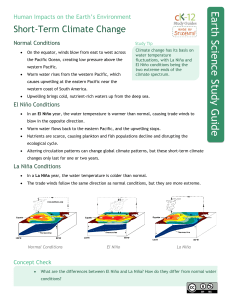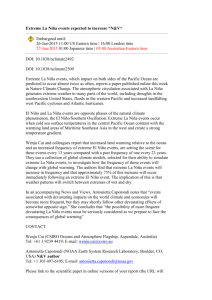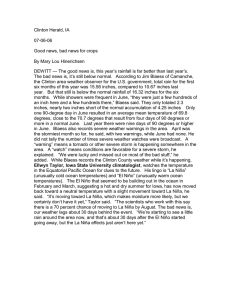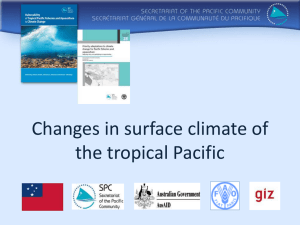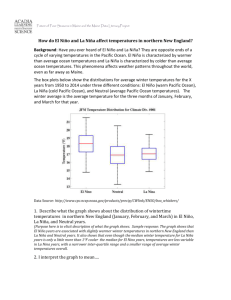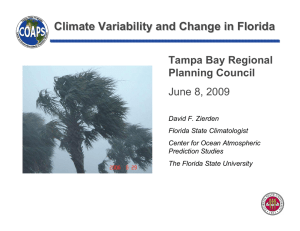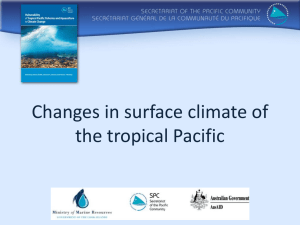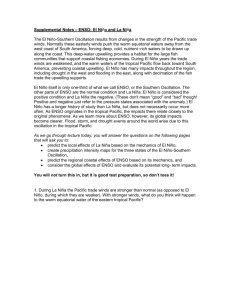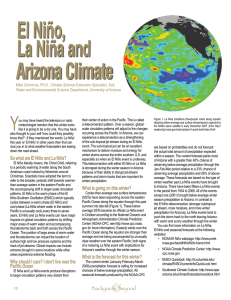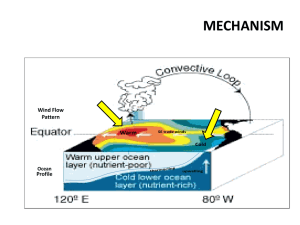La Nino
advertisement
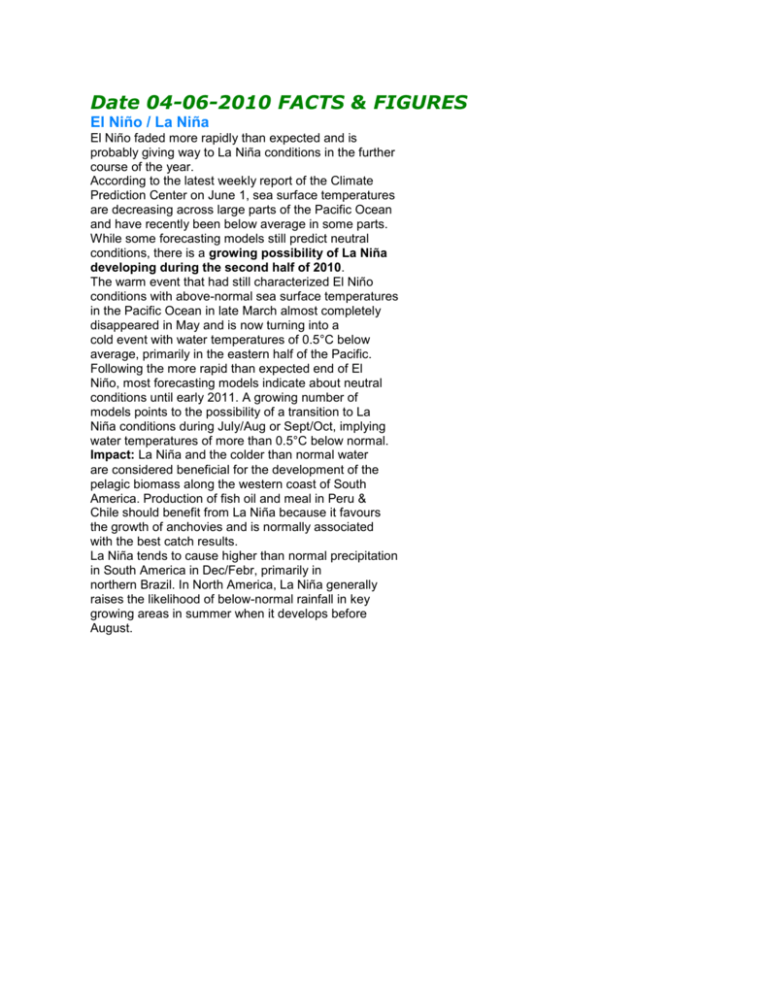
Date 04-06-2010 FACTS & FIGURES El Niño / La Niña El Niño faded more rapidly than expected and is probably giving way to La Niña conditions in the further course of the year. According to the latest weekly report of the Climate Prediction Center on June 1, sea surface temperatures are decreasing across large parts of the Pacific Ocean and have recently been below average in some parts. While some forecasting models still predict neutral conditions, there is a growing possibility of La Niña developing during the second half of 2010. The warm event that had still characterized El Niño conditions with above-normal sea surface temperatures in the Pacific Ocean in late March almost completely disappeared in May and is now turning into a cold event with water temperatures of 0.5°C below average, primarily in the eastern half of the Pacific. Following the more rapid than expected end of El Niño, most forecasting models indicate about neutral conditions until early 2011. A growing number of models points to the possibility of a transition to La Niña conditions during July/Aug or Sept/Oct, implying water temperatures of more than 0.5°C below normal. Impact: La Niña and the colder than normal water are considered beneficial for the development of the pelagic biomass along the western coast of South America. Production of fish oil and meal in Peru & Chile should benefit from La Niña because it favours the growth of anchovies and is normally associated with the best catch results. La Niña tends to cause higher than normal precipitation in South America in Dec/Febr, primarily in northern Brazil. In North America, La Niña generally raises the likelihood of below-normal rainfall in key growing areas in summer when it develops before August.
